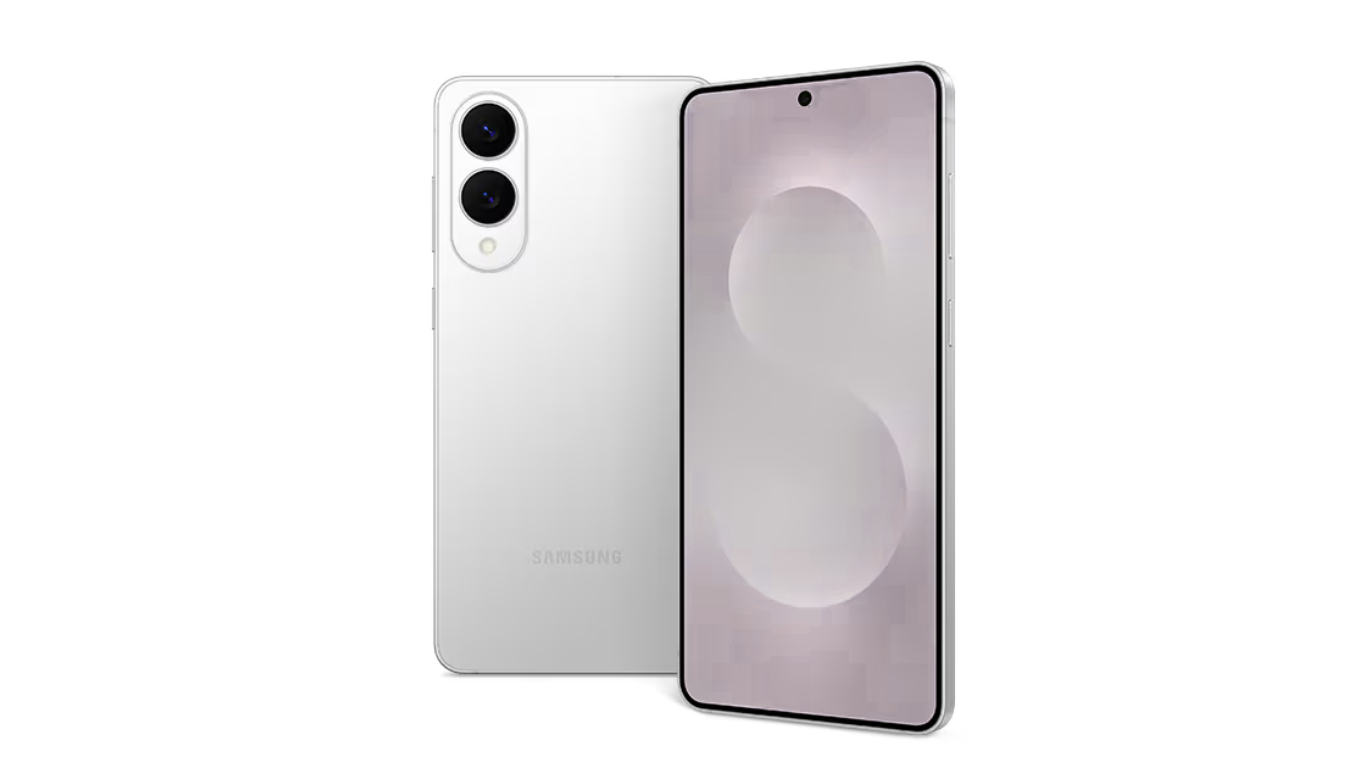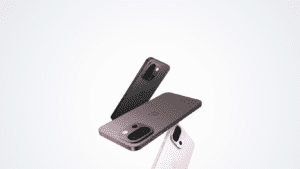The Samsung Galaxy S25 Edge is here, and it’s turning heads with its sleek, ultra-thin design. At just 5.8mm thick and weighing only 163 grams, it’s the slimmest Galaxy S phone yet—a real feat of engineering. I’ve spent some time with this phone, and let me tell you, it feels like holding a feather compared to other flagships. But does this slim design come at a cost? With a starting price of $1,099, it’s not cheap, so it’s worth digging into what makes this phone special and where it falls short. From its vibrant display to its powerful Snapdragon 8 Elite chip, the S25 Edge promises a lot. But with a smaller battery and no telephoto camera, there are compromises. Let’s break down the design, performance, camera, software, and battery life to see if this phone is worth the hype or if it’s just a stylish experiment.
Design: Sleek, Light, and a Bit Wobbly
The first thing you notice about the Galaxy S25 Edge is how thin and light it is. At 5.8mm and 163 grams, it’s a breath of fresh air in a world of bulky phones. The titanium frame feels sturdy, and the Gorilla Glass Ceramic 2 on the front and Gorilla Glass Victus 2 on the back add durability. It’s IP68 water- and dust-resistant, so no worries about spills or rain. The phone comes in three colors—Titanium Silver, Jetblack, and Icyblue—which look classy but not overly bold. The downside? The camera bump makes it wobble on flat surfaces, which can be annoying without a case. Speaking of cases, Samsung’s ultra-thin case keeps the sleek vibe but adds some grip. Overall, the design is a showstopper, but the wobbly back and sharp edges might bug some users. It’s a phone you’ll love showing off, though.
Build Quality and Materials
The S25 Edge feels premium, with its titanium frame giving it a solid yet lightweight feel. The Gorilla Glass Ceramic 2 on the front is tough, and I didn’t notice any scratches during my time with it. The back glass, while durable, is a fingerprint magnet, so you’ll be wiping it down often. The phone’s thinness doesn’t make it feel fragile—it survived being tossed in my bag without issue. The IP68 rating is a nice touch for peace of mind.
Ergonomics and Handling
Holding the S25 Edge is a dream for one-handed use. It’s slim and light, making it easy to grip, even with its 6.7-inch screen. The edges are a bit sharp, which might bother some during long sessions, but I got used to it. The buttons are well-placed, and the under-display fingerprint sensor is fast and reliable. It’s a phone that feels effortless to carry, whether in your pocket or hand.
Performance: Powerhouse in a Slim Package
The Galaxy S25 Edge doesn’t skimp on power. It’s powered by the Snapdragon 8 Elite for Galaxy, with two prime CPU cores clocked at 4.47GHz and a beefy Adreno GPU. Paired with 12GB of RAM and up to 512GB of storage, this phone flies through tasks. I threw everything at it—gaming, multitasking, video editing—and it didn’t break a sweat. However, it can get warm during heavy use, like long gaming sessions, due to its thin frame. The vapor chamber helps, but thermal throttling kicks in after about 5 minutes of intense tasks. Still, for everyday use, it’s smooth as butter. Whether you’re streaming, browsing, or working, the S25 Edge keeps up. It’s a flagship performer, even if sustained performance takes a hit in demanding scenarios.
Speed and Multitasking
Apps open instantly, and switching between them is seamless. I had multiple apps running—Chrome, YouTube, and a game—with no lag. The 12GB of RAM ensures you can juggle tasks without slowdowns. UFS 4.0 storage means apps load fast, and file transfers are quick. It’s a productivity beast for work or play.
Gaming Performance
Gamers will love the S25 Edge for casual play. Titles like Genshin Impact run smoothly at high settings, with vibrant colors popping on the screen. However, during extended sessions, the phone gets warm, and performance drops slightly due to throttling. It’s not a dealbreaker, but heavy gamers might notice. The 120Hz refresh rate makes everything feel fluid, though.
Camera: Impressive, but Missing Zoom
The S25 Edge’s camera setup is a mixed bag. You get a 200MP main sensor with optical image stabilization, borrowed from the S25 Ultra, and a 12MP ultrawide with autofocus for macro shots. The 12MP front camera is solid for selfies. Photos from the main camera are stunning—crisp, vibrant, and great in low light thanks to Galaxy AI’s Nightography. The ultrawide is decent but shows some distortion at the edges. The big miss is the lack of a telephoto lens. The 2x crop zoom is fine in good light, but anything beyond that, like the 10x digital zoom, gets blurry. Selfies are sharp with natural colors, and video recording is smooth with good stabilization. The camera is great for most users, but zoom enthusiasts might feel shortchanged.
Photo Quality
The 200MP main camera captures incredible detail, especially in daylight. Colors are vibrant without being overdone, and dynamic range is solid. Low-light shots are soft but still usable, with accurate colors. The ultrawide struggles a bit in dim conditions, but macro shots are surprisingly good thanks to autofocus.
Video and Selfie Performance
Videos look great, with excellent stabilization and punchy colors. You can switch between front and rear cameras while recording, a handy Samsung feature. Selfies are crisp, with natural skin tones, even in tricky lighting. The lack of a telephoto lens hurts zoom quality in videos, but up to 4x, it’s decent.
Software: Smart and Packed with AI
Running Android 15 with One UI 7, the S25 Edge feels fresh and intuitive. Samsung’s software is clean, with minimal bloat, and you get seven years of OS and security updates—a huge win for longevity. Galaxy AI steals the show, with features like Note Assist for summarizing notes, Live Translate for calls, and Generative Edit for photo tweaks. The new Multimodal AI Agents, powered by Google’s Gemini, let you point the camera at an object and ask questions—like finding the right washing temperature for clothes. The “Now” bar on the lock screen is handy, showing widgets like sports scores or flight reminders. If you’ve used One UI before, you’ll feel right at home, but the AI additions make it smarter and more useful.
Galaxy AI Features
Galaxy AI is a game-changer. Note Assist saves time by formatting and summarizing notes. Live Translate makes cross-language calls a breeze. The Multimodal AI is fun—pointing the camera at a shirt and asking about washing instructions worked like magic. Circle to Search is great for quick info lookups.
User Interface and Updates
One UI 7 is smooth and customizable, with a refreshed look. The “Now” bar feels like Apple’s Dynamic Island but with Samsung’s spin. Seven years of updates mean this phone will stay current until 2032, which is fantastic for long-term users. Bixby and Gemini work well together, making tasks easier.
Battery Life: The Slim Trade-off
The S25 Edge’s 3,900mAh battery is its biggest compromise. It’s smaller than the base S25’s 4,000mAh and the S25 Plus’s 4,900mAh, and it shows. In my tests, it lasted a full day with moderate use—about 6 hours of screen time with browsing, streaming, and some gaming. Heavy use, like gaming or 4K video recording, drains it faster, sometimes needing a recharge by evening. Charging is another letdown at 25W wired and 15W wireless—it takes about 75 minutes to fully charge, lagging behind competitors like the OnePlus 13. Still, for light users, it’s fine, and the efficient Snapdragon chip helps stretch the battery. Keep a charger handy if you’re a power user, though.
Battery Performance
On average, I got 16 hours and 40 minutes of web browsing, 7 hours and 44 minutes of YouTube streaming, and 9 hours and 38 minutes of gaming in tests. That’s decent but behind other S25 models. For casual use, it’s enough to get through a day without worry.
Charging Speed
The 25W wired charging is slow for a 2025 flagship. A 30-minute charge gets you to 48%, which is okay but not great. Wireless charging at 15W is fine for overnight top-ups. Reverse wireless charging is a nice bonus for earbuds or watches, but don’t expect miracles from the small battery.
Is It Worth the Price?
At $1,099 for the 256GB model (and $1,219 for 512GB), the S25 Edge is pricey. It’s $100 more than the S25 Plus, which has a bigger battery and a telephoto lens, and $200 less than the S25 Ultra, which offers more features. The slim design and lightweight feel are unique, but the battery life and lack of zoom might turn off some buyers. If you value portability and style over everything else, this phone is a winner. For those wanting a more balanced package, the S25 Plus or Ultra might be better. The S25 Edge is a bold move by Samsung, and while it’s not perfect, it’s a refreshing take on what a flagship can be.




